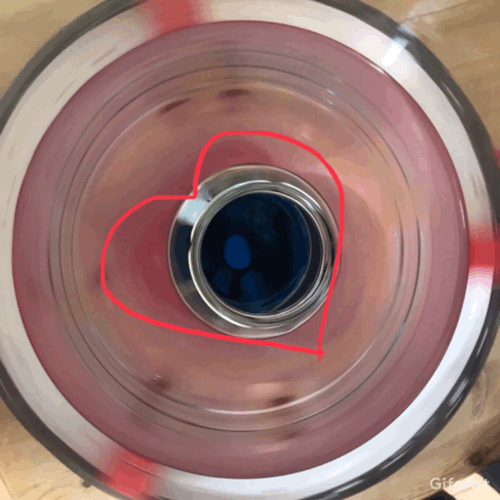
Funded! “Ocean currents in a tank: from dry theory to juicy reality”
Remember how Joke, Torge and I were working on building an affordable, home-made rotating tank to use in ocean dynamics teaching only last weekend? That session was inspired by a proposal that Torge submitted a while back, and which now got funded by PerLe, Kiel University’s project for successful teaching and learning (German abstract here). This is really exciting, it not only gives us official permission to play (well, someone will have to build the rotating tables and test the experiments, right?), it will also fund the collaboration and materials. Exciting!
We are planning to add hands-on experiments to the Bachelor-level “atmosphere and ocean dynamics” course at GEOMAR over the next year, but since there is no rotating table available, we want to build several (!) so several student groups can work on them at the same time. And you know me — what we do there will be documented and shared online not only by myself, but also by the students. So stay tuned, I see a lot of rotating tank experiments in our future! :-)
This is the kind of stuff we are going for (picture below shows old Hadley cell experiments from 2014)… Not quite there yet, but we will get there!

Spinning dye curtain - when a tank full of water has not reached solid body rotation yet - Dr. Mirjam S. Glessmer says:
[…] our DIYnamics-inspired turntable for our “dry theory to juicy reality” project, Torge and I came up with a fun way to illustrate the importance of full body […]
Taylor column in a rotating tank | Dr. Mirjam S. Glessmer says:
[…] both of my tank experiment projects, in Bergen and in Kiel, we want to develop a Taylor column demonstration. So here are my notes on the setup we are […]
Parabolic surface shape of a tank of water in solid body rotation | Dr. Mirjam S. Glessmer says:
[…] of the first exercises Torge and I plan on doing with the students in our “dry theory to juicy reality” project is to bring a water-filled tank to solid body rotation and measure rotation, […]
Rotating vs non-rotating turbulence — now with movie! | Dr. Mirjam S. Glessmer says:
[…] of demonstrations being prepared for Torge’s and my “dry theory to juicy reality” project. Shown here today: rotating vs non-rotating turbulence. Because the only way to […]
Barotropic instabilities / Hadley cell circulation in a tank | Dr. Mirjam S. Glessmer says:
[…] DIYnamics-inspired turntable that Torge and myself have been working on for our “dry theory to juicy reality” project is finally working […]
Why do we need a rotating tank to study ocean and atmosphere dynamics? A demonstration | Dr. Mirjam S. Glessmer says:
[…] our project “Ocean currents in a tank: From dry theory to juicy reality“, Torge, Joke and I are working on building affordable rotating tanks to use in Torge’s […]